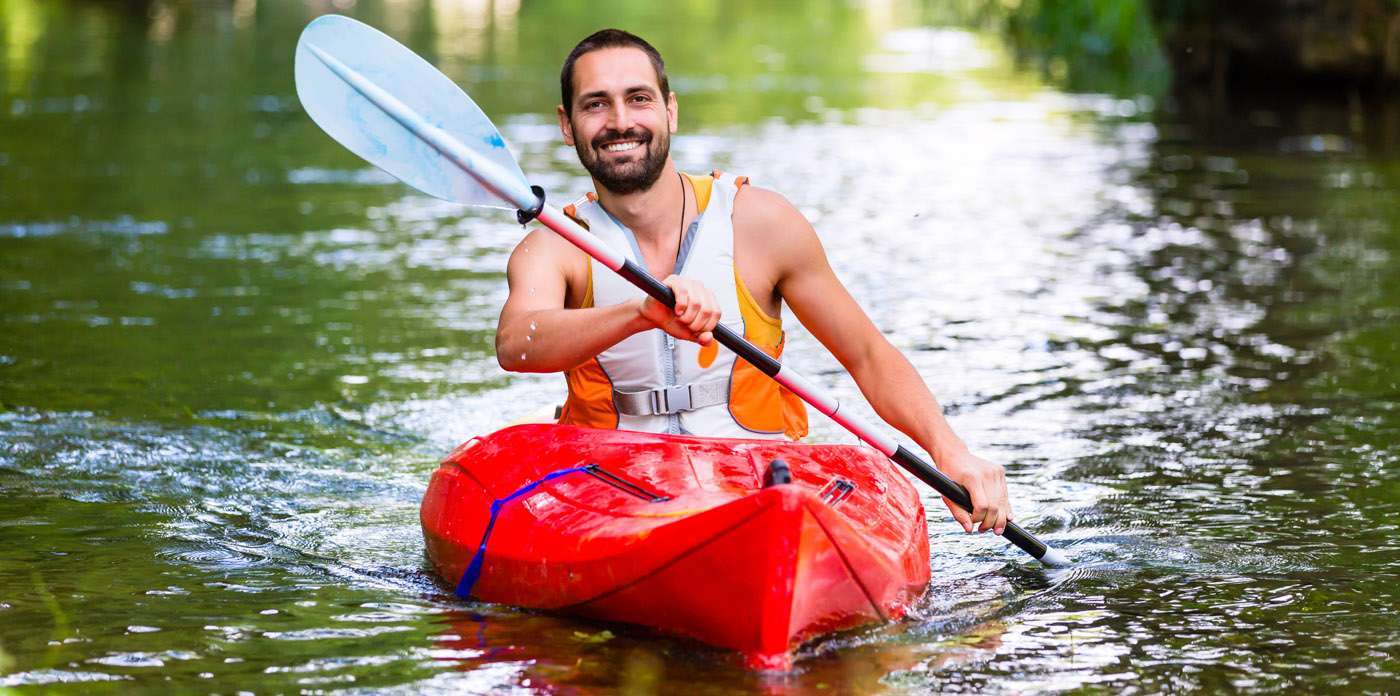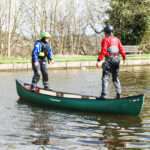Building you own kayak out of cedar strips is a rewarding and moderately challenging project. The end result is a beautiful wood kayak that is as stiff and as light as a modern composite kayak. Cedar strip kayaks, often called strippers, take between 80 and 150 hours to build and typically cost a fraction of the price of a new composite kayak. Many designs are on the market, so finding a plan to suit your needs should be easy.
Instructions
Difficulty: Moderately Challenging
Things You’ll Need:
- Cedar strip kayak kit Staple gun Staples Wood glue Handsaw 80- to 220-grit sandpaper Mixing bowl Foam roller Squeegee Water bottle Jigsaw Marine varnish
- Cedar strip kayak kit
- Staple gun
- Staples
- Wood glue
- Handsaw
- 80- to 220-grit sandpaper
- Mixing bowl
- Foam roller
- Squeegee
- Water bottle
- Jigsaw
- Marine varnish
Step 1
Build a strongback based on your kit’s plans. The strongback is a level, solid, building platform. Take your time when building it, so it is level and straight. Draw a centerline down its length. Attach your kit’s station forms to the strongback at 1-foot intervals. Make sure the forms are plumb and run a string line along them to make sure they are in alignment with the strongback’s centerline.
Step 2
Starting on the hull, staple the cedar strips to the forms. Starting at the sheerline, staple your 3/16-inch by 3/4-inch strips to each form. Most kits ship with bead and cove strips; the bead on one strip is designed to fit into the cove on the other. Start the first strip with the cove up, so it is easy to fill the cove with wood glue to bind the next strip into place. Once you reach the bottom, you’ll need to fit each individual strip into place using a handsaw.
Step 3
Sand and fair the hull with 80-grit sandpaper. While sanding, make sure the stems of the kayak are shaped according to the plans. A fair hull is one in which the curves flow smoothly from front to back and the port and starboard sides are the same.
Step 4
Fiberglass the hull. Follow the directions that came with your kit, but, basically, you cover the boat with the fiberglass fabric, mix the epoxy in a bowl and roll the epoxy onto the glass. Then after the epoxy starts to kick off, you squeegee excess epoxy off. It’s key to apply enough epoxy to make sure the glass is wet-out completely.
Step 5
Turn the boat over and strip, sand, and fiberglass the deck. Follow the same steps you did for stripping, sanding and glassing the hull.
Step 6
After the deck is finished drying, sand the inside of the hull and deck. Use a round water bottle wrapped with 80-grit sandpaper to make it easier to sand the concave inside of the hull. Then glass the inside.
Step 7
Using a jigsaw, cut out the locations where you will install hatches. Then epoxy the hatches into place. Rubber hatches are easy to install and are the most watertight, so if your kit didn’t ship with rubber hatches, consider the upgrade.
Step 8
Join the hull together using the fiberglass tape, which shipped with the kit, and epoxy. The easiest way is to hot glue the fiberglass tape to the inside of the hull, then using packing tape, temporarily join the deck and hull together on the outside. When you roll epoxy onto the tape on the inside, the hot glue will have helped it stay in place. Finish joining the hull by rolling a seam of glass on the outside.
Step 9
Outfit the inside of the kayak with bulkhead, a seat and foot braces. Add a cockpit coaming, deck line, end toggles and bungee cord to the deck of the kayak.
Step 10
Varnish the kayak with thee to six coats of marine spar varnish. Take your time before the first coat to sand the epoxy/fiberglass with 80-grit to 220-grit sandpaper. Sand lightly between coats.
Last modified: November 4, 2022


